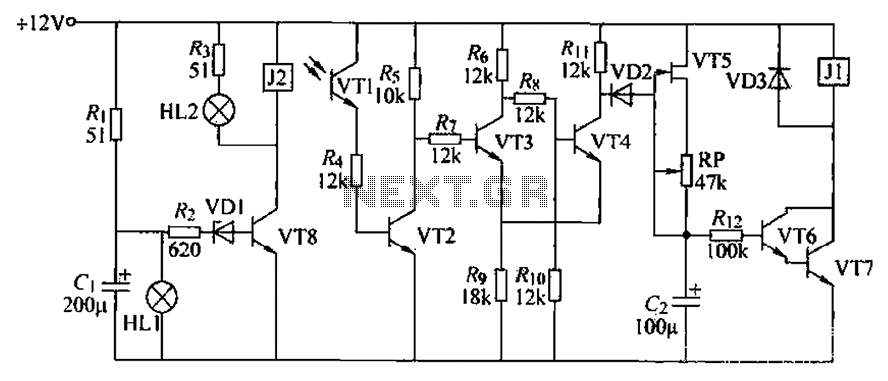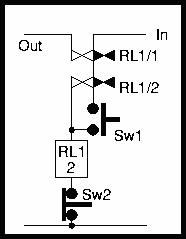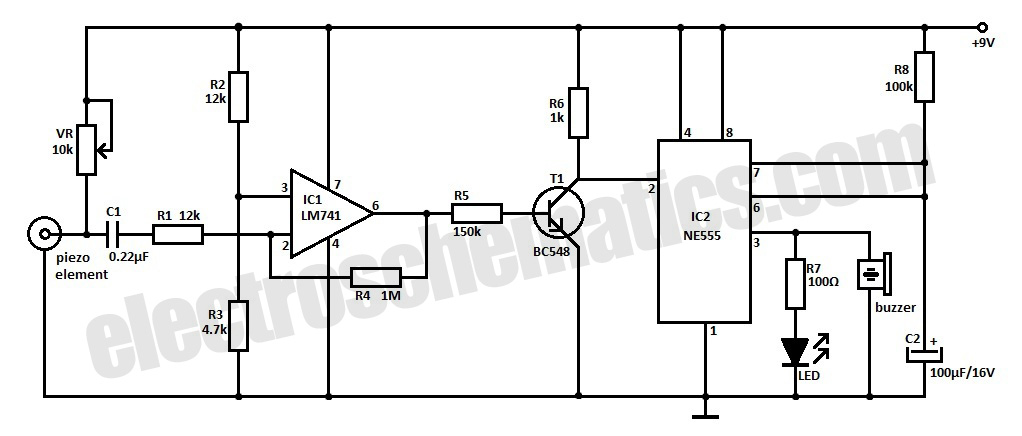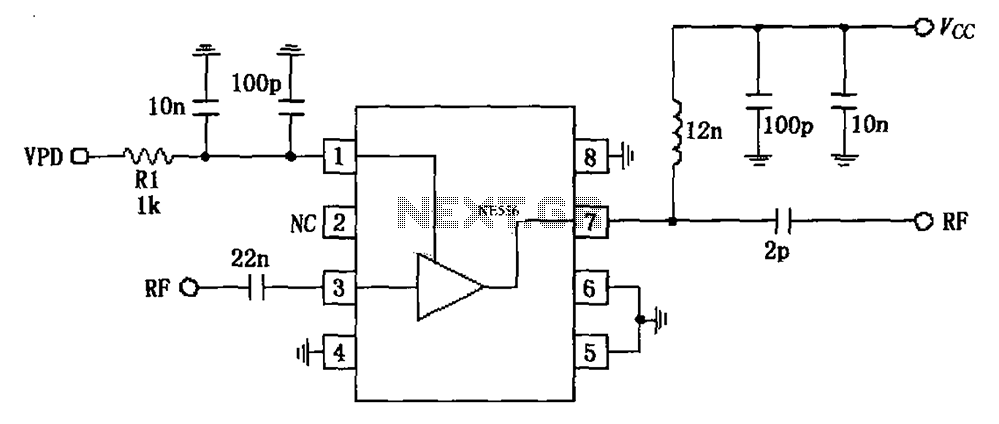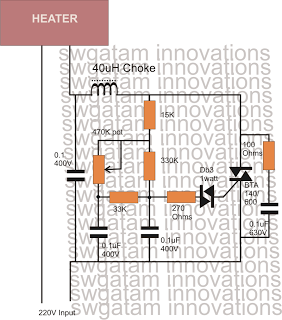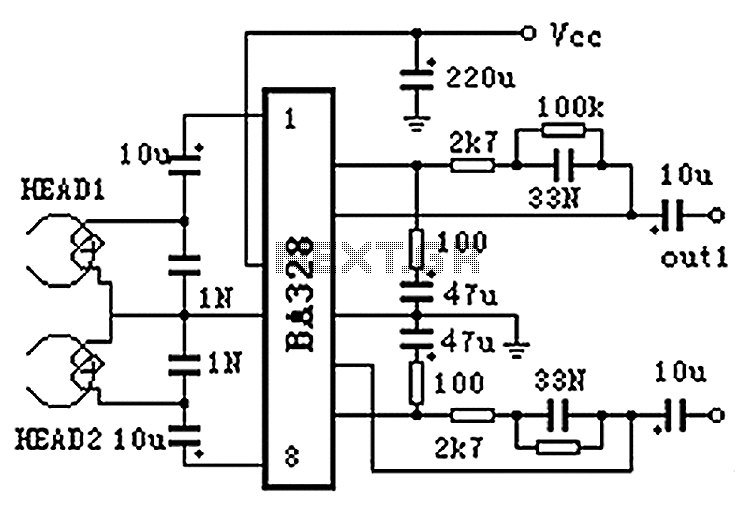
ND838 application circuit
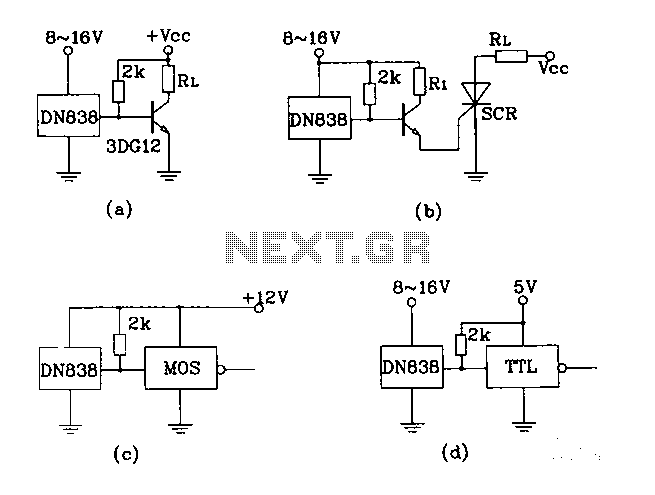
Figures (A), (B), (C), and (D) illustrate outputs that can directly drive transistors, thyristors, relays, CMOS circuits, and TTL circuits.
The described figures depict various output configurations capable of interfacing with different electronic components. Each output is designed to provide the necessary drive capability to control various devices, including transistors which are essential for amplification and switching applications, thyristors for high-power control, and relays for electrically operated switches. Additionally, the outputs can drive CMOS and TTL circuits, which are fundamental in digital electronics for logic operations and signal processing.
Transistors, such as BJTs and MOSFETs, require specific voltage and current levels to operate effectively. The outputs illustrated in the figures are tailored to meet these requirements, ensuring reliable operation within their respective applications. Thyristors, known for their ability to handle high voltages and currents, also benefit from such direct drive capabilities, allowing for efficient control in power electronics.
Relays, which serve as electromechanical switches, can be directly driven by these outputs, facilitating the control of high-power loads while isolating the control circuit from the load circuit. The compatibility with CMOS and TTL circuits indicates that the outputs can operate in both low-power and high-speed environments, making them versatile for various digital applications.
In summary, the outputs in Figures (A), (B), (C), and (D) are designed to interface directly with a range of electronic components, providing essential drive capabilities for transistors, thyristors, relays, CMOS, and TTL circuits. This versatility makes them suitable for a wide array of electronic applications, from simple switching to complex logic operations.FIG. (A), (b), (c), (d), respectively, which output can directly drive transistor, thyristor, relay, COMS circuits, TTL circuits.
The described figures depict various output configurations capable of interfacing with different electronic components. Each output is designed to provide the necessary drive capability to control various devices, including transistors which are essential for amplification and switching applications, thyristors for high-power control, and relays for electrically operated switches. Additionally, the outputs can drive CMOS and TTL circuits, which are fundamental in digital electronics for logic operations and signal processing.
Transistors, such as BJTs and MOSFETs, require specific voltage and current levels to operate effectively. The outputs illustrated in the figures are tailored to meet these requirements, ensuring reliable operation within their respective applications. Thyristors, known for their ability to handle high voltages and currents, also benefit from such direct drive capabilities, allowing for efficient control in power electronics.
Relays, which serve as electromechanical switches, can be directly driven by these outputs, facilitating the control of high-power loads while isolating the control circuit from the load circuit. The compatibility with CMOS and TTL circuits indicates that the outputs can operate in both low-power and high-speed environments, making them versatile for various digital applications.
In summary, the outputs in Figures (A), (B), (C), and (D) are designed to interface directly with a range of electronic components, providing essential drive capabilities for transistors, thyristors, relays, CMOS, and TTL circuits. This versatility makes them suitable for a wide array of electronic applications, from simple switching to complex logic operations.FIG. (A), (b), (c), (d), respectively, which output can directly drive transistor, thyristor, relay, COMS circuits, TTL circuits.
